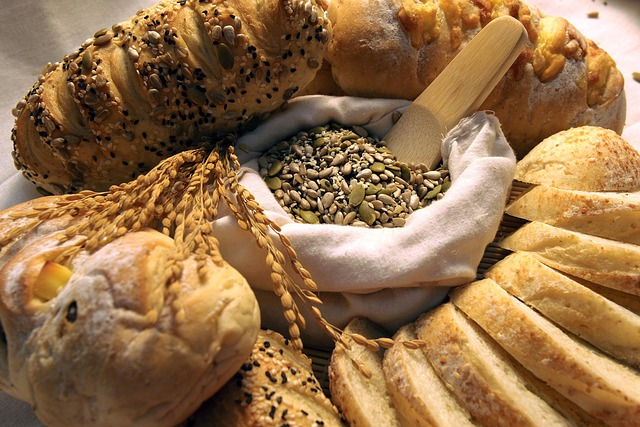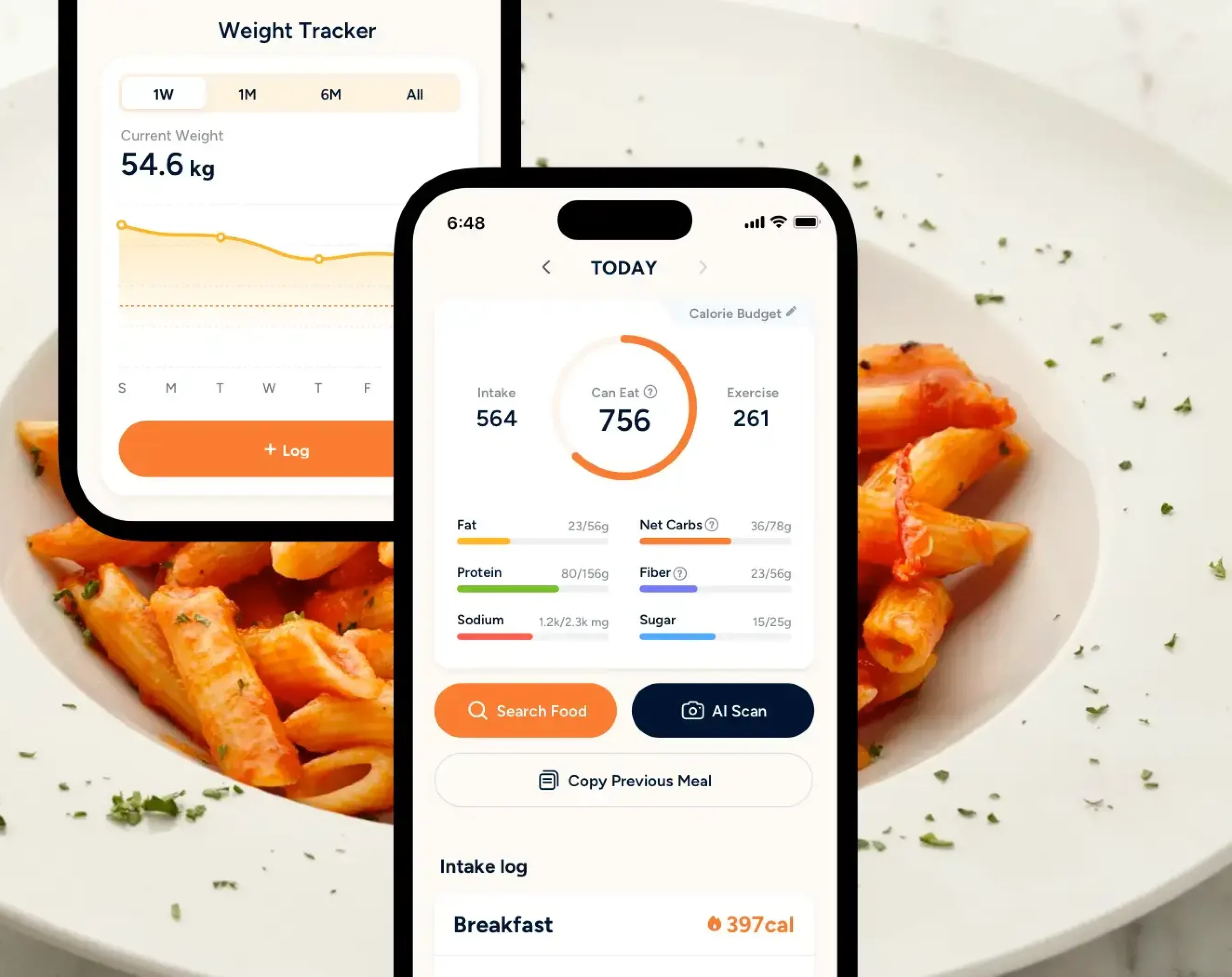There are many eating plans out there that only focus on the amount of calories consumed. However, you may also find some that focus on the amount of carbohydrates, proteins, and fats. These are known as macronutrients.
While calories tell you how much energy food provides, macronutrients explain where that energy comes from and how your body uses it. Understanding this can help to transform the way you eat and think about food. In this article, we’ll cover what macronutrients are and why they are important for us.
Key Takeaways
- Macronutrients, or macros, are nutrients that our body needs for energy.
- Macronutrients include carbohydrate, proteins and fats.
- You can get carbohydrate, protein and fat from various food sources such as whole grains, meat, nuts and seed oils.
- The recommended daily macronutrient intake range for adults are: Carbohydrates: 45–65% of daily calories, Protein: 10–35% of daily calories, Fat: 20–35% of daily calories.
What Are Macronutrients?

Macronutrients, or macros, are nutrients that your body needs in large quantities to provide energy, aid in hormone production, regulate metabolism, and maintain other systems and structures within the body.
The three macronutrients include carbohydrates, proteins, and fats. Each of these provides the body energy and has its individual effects on our body composition and health [1].
a) Carbohydrates

Carbohydrates provide dietary energy of up to 4kcal of energy per gram. When consumed, the digestive tract will break it down into glucose for energy and stimulate the release of insulin in the body. Excess glucose is stored in the liver and muscle tissues until needed [2].
In addition to this, carbohydrates also play an important role in supporting good gut health. It’s found in many food sources such as grains, legumes, fruits, and vegetables. For example, whole grain intake is associated with lowered risk of heart disease, stroke, cardiovascular disease, and other infectious diseases.
An intake of fresh fruits and vegetables provides the body with dietary fiber, which helps to promote satiety, improve gastrointestinal function, reduce cholesterol levels, and improve blood sugar control [3].

Smarter Nutrition Tracking
Track calories and over 100 other nutrients all in one place.
Download Eato For Freeb) Proteins

Proteins also provide energy of up to 4kcal of energy per gram, along with essential amino acids that the body is not able to produce. It can be derived from food sources like meat, fish, dairy, eggs, grains, legumes, nuts, and seeds. While animal products are considered the better source of protein compared to plant-based proteins, as they contain a complete composition of essential amino acids, have high digestibility (of up to 90%), and greater bioavailability [4].
However, animal-based food sources also contain saturated fats, which have been linked to an increased risk of cardiovascular disease, dyslipidaemia, and some other forms of cancer. This is more so for processed meats.
Adequate protein intake is important for maintaining lean body mass and also to prevent the loss of skeletal muscle mass, preserve bone mass, and reduce the risk of falls and fractures [3].
c) Fats

Dietary fats, or lipids, are considered the most energy-dense macronutrients, providing 9kcal of energy per gram. They help our body to absorb fat-soluble vitamins, including vitamin A, D, and E, and they also help to enhance the flavor of foods.
Fats are particularly important for infants and toddlers as they help them to grow and develop properly. However, there’s a need to distinguish between healthy fats vs unhealthy fats, as eating too much of “bad fats” could cause more harm than good.
There are two types of fats, one being unsaturated fats and the other being saturated fats. Unsaturated fats can be known as the “healthy fats” and are found mostly in oils. For example, you can find it in fish, nuts, and oils such as canola oil, corn oil, olive oil, and safflower oil, and listed on nutrition labels as “monounsaturated” or “polyunsaturated” fats.
Saturated fats are also known as solid fats. They tend to be found in processed or sugary foods, such as chocolates, butter, margarine, meat fats, burgers, pizza, and more. Eating too much of it may raise our LDL cholesterol levels, increasing the risk of cardiovascular disease [5].
List of Macronutrient Food Sources
Here’s a list of where each macronutrient can be found in different food sources:
a) Carbohydrate food sources
For carbohydrates, you may want to focus on looking for complex carbohydrates that provide good dietary fiber, as it is good for overall digestion.
Common examples include:
- Whole grains (eg, brown rice, quinoa, oats, barley)
- Whole-grain varieties of bread and pasta
- Non-starchy vegetables (e.g., leafy greens, asparagus, brussels sprouts, cabbage, zucchini, cucumber)
- Starchy vegetables (e.g., potatoes, sweet potatoes, squash, corn, turnip, carrot)
- Fruits (e.g., banana, apple, mango, berries, melon)
- Legumes (e.g., beans, lentils)
b) Protein food sources
Protein-wise, try to focus on getting more high-quality animal-based and plant-based proteins in your diet while limiting processed meats.
Examples of protein sources include:
- Meat (e.g., beef, lamb)
- Poultry (e.g., chicken, turkey, pork)
- Fish
- Dairy (e.g., Greek yogurt, cottage cheese)
- Plant-based foods (e.g., tofu, tempeh, edamame)
- Nuts and seeds (e.g, almond, pistachios, nut butter, pumpkin seeds, hemp seeds)
c) Fat food sources
For fats, focus on foods that contain unsaturated fats and minimize your intake of foods that are high in saturated fats.
Some examples include:
- Olive oil
- Avocado oil
- Chia seeds
- Flax seeds
- Eggs
- Salmon
- Nuts and nut butters
- Avocadoes
- Olives
How Much Macros Do Our Bodies Need?
The appropriate amount of macros that we require to function optimally is typically dependent on a few factors, like age, gender, body weight, and activity levels. If you have a specific health goal that you are trying to achieve (eg, gain weight, build muscles, or lose weight), that could also affect the amount of macros that you need.
For example, those trying to build muscles will most likely load up on protein, while athletes who are training their endurance levels may focus on eating more carbs.
Based on the United States Department of Agriculture (USDA), this is are the numbers of what is generally recommended for adults under their daily macronutrient intake range [6]:
- Carbohydrates: 45–65% of daily calories
- Protein: 10–35% of daily calories
- Fat: 20–35% of daily calories

Weight Loss Has Never Been Easier
Get accurate nutrition info instantly. Keep track of your progress.
Download Eato For FreeHow to Calculate Macro Ratios
TO start off, you need to calculate your REE (resting energy expenditure) and your non-resting energy expenditure (NREE).
- REE refers to the amount of calories that you burn at rest
- NREE refers to calories that you burn during physical activity or digestion
- Factoring these two in will give you your Total Daily Energy Expenditure (TDEE)
Step 1
To make things simple, you can either look for an online ‘calorie calculator’ or use the Mifflin-St Jeor formula to calculate manually.
Mifflin-St Jeor Formula for manual calculation:
- Males: calories/day = (10 x weight [kg]) + (6.25 x height [cm]) – (5 x age [years]) + 5
- Females: calories/day = (10 x weight [kg]) + (6.25 x height [cm]) – (5 x age [years]) – 161
Then, multiply this according to your activity level:
- Sedentary: x 1.2 (little exercise or physical activity)
- Lightly active: x 1.375 (light exercise or physical activity for less than 3 hours a week)
- Moderately active: x 1.55 (moderate exercise or physical activity most days of the week)
- Active: x 1.725 (intense exercise or physical activity every day)
- Very active: x 1.9 (strenuous exercise or physical activity two or more times a week)
Step 2
Decide on your macro ratio
The amount of macros that you will need depends on the specific health goal you want to achieve, and other factors like weight and age.
- Balanced diet (general health): 50% carbs, 20% protein, 30% fat
- Muscle gain: 40% carbs, 30% protein, 30% fat
- Weight loss (low-carb focus): 30% carbs, 40% protein, 30% fat
- Keto diet: 5–10% carbs, 20–25% protein, 65–75% fat
Step 3
Time to calculate your final macronutrient needs
Based on the calorie breakdown for each macronutrient:
- Carbs and protein = 4 calories per gram
- Fat = 9 calories per gram
If your daily calorie intake is 2,000 calories per day, and you are following a balanced diet ratio of 50% carbs, 20% protein, and 30% fat split:
- Carbs: 50% = 1,000 calories ÷ 4 = 250g carbs
- Protein: 20% = 400 calories ÷ 4 = 100g protein
- Fat: 30% = 600 calories ÷ 9 = 67g fat
This means that your daily macro intake would be 250g of carbs, 100g of protein, and 67g of fats. The only problem now is that you’ll have to ensure that you keep track of these numbers and every food intake, which can be overwhelming for some.
The most convenient way to track your macros is through the Eato app. With an instant food log feature, you can scan and save your food with just a few taps. That way, you no longer need to stress about counting macros or weighing each meal.
Macronutrients vs Micronutrients
Now that you know about what macronutrients are, there’s also something called micronutrients. Micronutrients are the vitamins and minerals that your body needs in small amounts, hence why it’s called ‘micro’.
6 Types of Essential Micronutrients
These vitamins and minerals are essential for processes that take place within our body, such as brain and hormone function, digestion, and many more [7]. Without it, it could cause potential health complications.
Here are the six essential micronutrients that we need and why [8]:
| Nutrient | Description |
|---|---|
| Iron | Iron is linked to brain development in children and supports our physical productivity. Being iron-deficient can cause anemia, which can be harmful for both the mother and baby during pregnancy. |
| Folate | Folate is important for fetal growth. Folic acid, a form of folate, helps to prevent birth defects of the brain, spinal cord, and skull. |
| Vitamin A | Vitamin A helps to support healthy eyesight and our immune system. Being deficient in Vitamin A can increase the risk of blindness and death from infections like measles. |
| Iodine | Iodine is important for brain and cognitive development. Without this, it can lead to developmental delays. |
| Zinc | Zinc helps to promote immunity, infection resistance, growth, and development of the nervous system. |
| Vitamin D | Vitamin D is essential for bone health, along with muscle and nerve functions. It helps the immune system to fight off bacteria and viruses. |
Unlike macronutrients, which we need in larger amounts for energy and growth, micronutrients are required only in trace amounts. Macronutrients act as a fuel for the body, while micronutrients ensure that your body can use that fuel effectively. Together, they form the foundation of a healthy, well-functioning system.
Where Are the Macronutrients Located on a Nutritional Label?
On a nutritional label, you will find macronutrients are displayed in a table format, under “Nutrition facts”, just below the serving information and calories.
However, rather than being specified as ‘macronutrients’, you will find that the macronutrients are broken down into their main categories— total fat, total carbohydrates, and total protein.
If you’re unsure of how to read a nutrition label, you may refer to our separate guide here: How to Read Nutrition Labels (to include only after the article is published)
5 Tips to Implement a Healthy Diet
A healthy, balanced diet can be broken down into 5 key steps.
1. Plan in advance
Meal prep or setting aside snacks in advance can make it easier for you to follow your diet, rather than deciding on what to eat and drink at the peak of your hunger cues. This can cut down on your likelihood of overeating, or binge-eating, or even picking foods that are not as healthy.
2. Prioritize whole foods
Unfortunately, the reality is that some processed foods or ultra-processed foods are easier to reach for and prepare, compared to whole foods. However, whole foods will be more satiating, especially lean proteins, whole grains, fruits, vegetables, and healthy fats, which can also contribute to a healthier diet, and a more balanced meal.
3. Allow “cheat days” or flexible eating
Being too strict on your diet can lead to burnout or unsustainability. Try the 80/20 rule, which encourages nutritious choices 80% of the time while allowing occasional treats for the remaining 20%.
4. Stay hydrated
Water supports metabolism and digestion, so it’s important to keep yourself hydrated throughout the day.
5. Listen to your body
Pay attention to hunger cues, fullness, and how you feel instead of relying solely on calorie counts or numbers. Get used to being able to tell the difference between being hungry versus being bored, or even being thirsty. Sometimes, with how accessible it is to get food, telling apart those cues may be more difficult than it seems.
The Final Takeaway: Counting Your Macros
Counting macros can help you to have a better understanding of how food fuels your body. It gives you flexibility to enjoy the foods you love while trying to lose fat, gain muscle, or simply focus on mindful eating. At the end of the day, tracking macros shouldn’t be about restriction but about building awareness and creating a balance for yourself.
If you want to make the process of counting macros even easier, that’s where Eato can help. With built-in macro tracking, meal logging, and personalized insights, the app helps you to skip the tedious calorie counting and focus on your nutrition so that you can feel and perform better. Try it now for free!

Smarter Nutrition Tracking
Track calories and over 100 other nutrients all in one place.
Download Eato For Free



